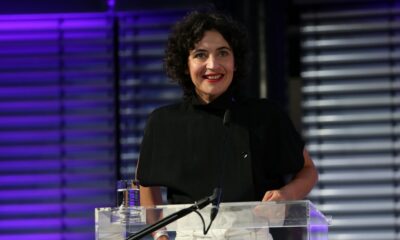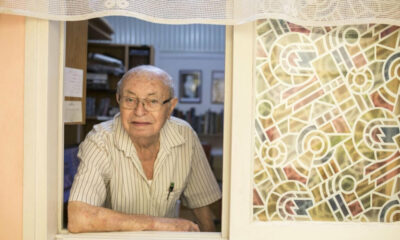Features
From painting and making bead necklaces as a teen – to nursing for most of her life – as well as writing a recipe column for the Jewish Post from 2010-2014, Francine Kurlandski has had a myriad of interests.
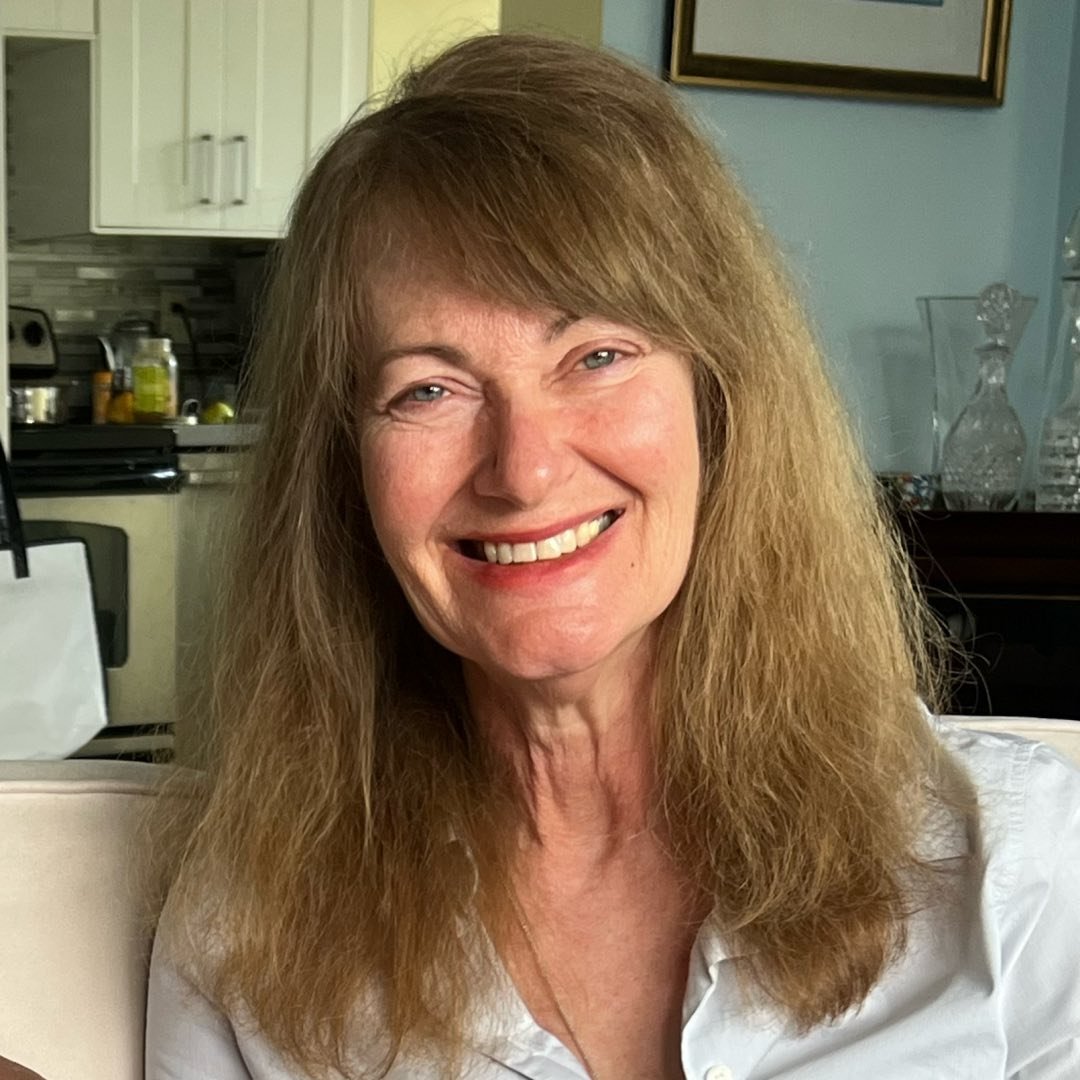
By BERNIE BELLAN We are often asked by readers why we profile so many ex-Winnipeggers.
“Aren’t there enough Winnipeggers with interesting stories to tell?” is what a lot of readers ask us.
The truth is that finding interesting people to write about is the easy part; finding writers who want to take the time to interview those interesting people though, and then turning that interview into a well-written article is the hard part.
When I was the publisher of this paper I generally shied away from doing exactly that kind of profile. It was time consuming and, knowing how fussy many individuals are about what’s written about them, I always felt an obligation to let the interview subject vet what I had written – even to make changes if they didn’t like how some things came out.
I started to record all my interviews – few as they might have been, and then transcribe them using a transcription service on my Mac computer.
But, for quite some time I had refrained from conducting any interviews. Then I was contacted by someone at the Jewish Post office in the Gwen Secter Centre who told me there was a very nice woman who was going to be visiting Winnipeg soon – and this particular woman thought that I might have an interest in interviewing her.
I was told that her name was Francine Kurlandski. “Why does that name sound so familiar?” I wondered to myself. With my curiosity whetted I phoned the number Francine had left with the Jewish Post and said to her, when she answered the phone, that her name was very familiar to me, but I couldn’t quite place her.
Francine answered: “Don’t you remember? I used to write a recipe column for the Jewish Post?”
It all came back. Of course, now I remembered, but didn’t Francine also have another name when she used to write for us? I asked.
“Yes, I was Francine Teller to start. Then, when I got remarried, I started using my new married name – Kurlandski.”
“But most of my friends in Winnipeg will remember me for my maiden name, which was Wise,” Francine added.
The daughter of Marion and Israel Wise and sister to Elaine, Francine, who was born in 1957, said she grew up in River Heights – at 756 Lanark to be specific. She attended, in order: John Dafoe, J. B . Mitchell, and then Grant Park.
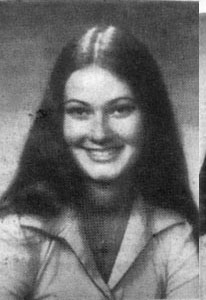
Along the way, when she was 17 years old, Francine was also Miss Israel for the Israel Pavilion at Folklorama.
Francine had told me prior to the interview that her first career was as a nurse, so I asked her whether she had long had a desire to study nursing. Initially, she was unsure, but she says she “inherited the caring feeling that is so instrumental in nursing” from her father.
Israel Wise had a degree in social work, Francine said, and “worked for the province helping Indigenous people.” In addition, “he was also the youth director at the Shaarey ZedeK Synagouge and president of the General Monash branch of the Canadian Legion for veterans.” Francine’s mother, who worked for Technion Canada “also had a social service bent, so nursing was a natural fit,” Francine suggested.
Still, before eventually entering the Misericordia School of Nursing, Francine said her first love was art, a talent she now says “lay latent within her. “She recalls going downtown on weekends: “I remember going to the stores that had sold these little tiny beads – and that was so popular then. And I got into making beaded and feather necklaces.
“And then that led me into teaching myself how to do macrame, needle point and knitting. So, I loved all those crafty things. My parents had a cottage at Gimli. I remember loving to draw, and would go into the dock and sketch the boats and the birds. I loved all that.”
But, aside from her love of art, Francine found that enrolling in nursing school was a perfect fit for her. She remained a nurse until quite recently.
Francine was married at what we would now consider a very early age, when she was only 21. When she was 23 she and her then then husband moved to Toronto where Francine began “painting suede kippas with Sesame Street characters, also Ghostbusters, and I sold them to a couple of Jewish bookstores here.”
She began to study watercolouring in earnest, inspired, she said, by a trip she took to Israel where she saw the artists’ colony in Safed.
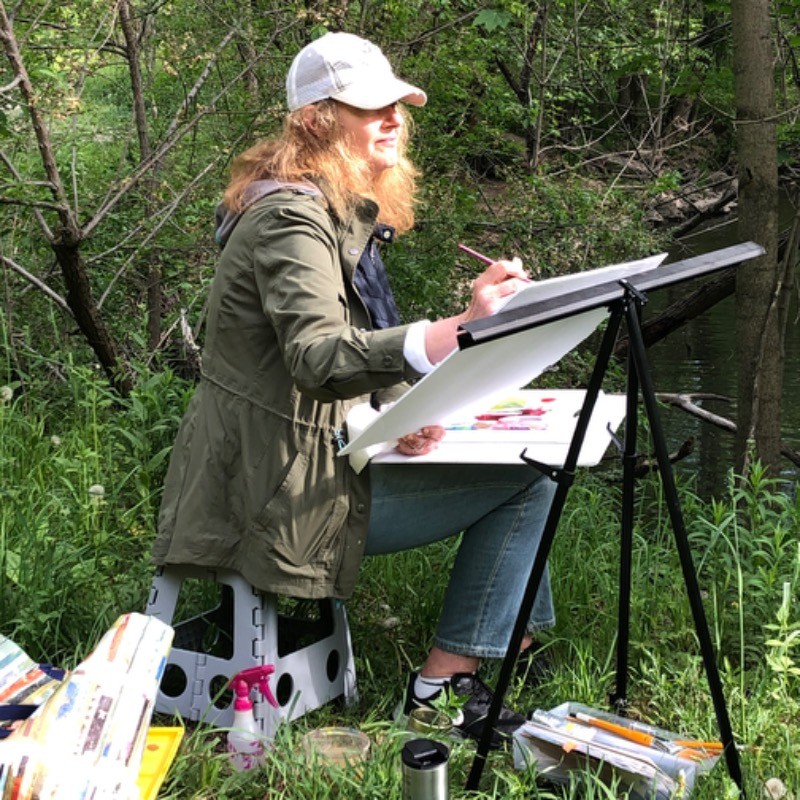
Francine noted that “once my children were in their teens, I had time to explore my painting. And that’s when I started a painting course from the city of. Toronto. I also connected with a group of artists in North York, and to this day, I belong to the Toronto Watercolor Society where I got to meet like-minded artists.”
Francine said she just recently retired from nursing after 45 years. The last 20 years of her career, she said, were spent working for another former Winnipegger, Dr. Rochelle Schwartz.
The mother of three sons, Francine explained that her home could be described as modern Orthodox. All three of her sons had the opportunity to study in Israel, she noted. Two of them studied at Yeshiva University while another one attended at Touro, in New York.
When the oldest was 18, she said, she took up painting more seriously.
I wondered though, about Francine’s cooking expertise. From where did that come?
“Was your mother a really good cook?” I asked.
“My whole extended family were good cooks, especially my late aunt, Karen Wise,” she answered.
In 1997, Francine noted, hospitals across Canada embarked on a downsizing campaign.
“I was on leave because I had a baby at that time. I really needed to bring in income. So, for extra income. I started to cook from my home… wholesome, nutritious food. I started a vegetarian food business, and did that for four years. And with that food business I thought I could teach cooking lessons, and write recipes for the paper.”
As a sidenote, I said to Francine that I didn’t remember when she actually wrote a cooking column for the Jewish Post, but when I checked our archives, it turned out that it was from 2010-14.
Francine’s food business lasted until 2003, until she began working for Rochelle Schwartz.
It was around that time that Francine started trying to enter some of her paintings in juried art shows. She continued to study art for a certain period with a private art teacher.
“Every course you take as an artist, you learn how to improve,” Francine observed.
“After I experimented with all kinds of different subjects I focused on portraits and Judaica art. I’ve always had a deep interest in the Jewish lifestyle.”
When it came to marketing her paintings though, once again Francine had to ” learn, even to put something on Instagram. It was all baby steps. And you’re doing this all by yourself. You don’t wanna hire someone to do it.”

Francine has had her art exhibited in many of the art society’s exhibitions and is working with Toronto’s United Jewish Appeal for a future showing.
You can imagine the excitement Francine must be feeling. If you want to see samples of Francine’s art you can check out her Instagram page. Just go to Instagram and look for @artistfrancine.
Features
Is This the End of Jewish Life in Western Countries?

By HENRY SREBRNIK “Globalize the Intifada” has been the chant echoing through streets since October 7th, 2023. It was never a metaphor, and we now see the gruesome results across the western world, from Australia to Canada: the rise of groups of large, active networks of Islamist and anti-Zionist organizations.
Jews in the West are discovering that the nations they defended, enriched, and profoundly shaped have become increasingly inhospitable. After the Holocaust, explicit Jew-hatred became unfashionable in polite society, but the impulse never disappeared. The workaround was simple: separate Zionism from Judaism in name, then recycle every old anti-Jewish trope and pin it on “the Zionists.”
We have seen the full legitimization of genocidal anti-Zionism and its enthusiastic adoption by large segments of the public. The protests themselves, as they began immediately on October 7th, were celebrations of the Hamas massacres. The encampments, the building occupations, the harassment campaigns against Jewish students, the open calls for intifada, the attacks on Jews and Jewish places have become our new norm. History shows us that antisemitism does not respond to reason, incentive or the honest appeals of the Jewish community.
Outside the United States, there is no Western political establishment with either the will or the capability to address this problem, let alone reverse its growth. I’m sorry to say this, but the future of Western Europe, Canada, Australia, and New Zealand is likely to be increasingly Jew-free.
Today, police stand and watch mobs chant for Israel’s destruction, call for the genocide of its people, harass visibly Jewish citizens, and drive antisemitic intimidation deep into urban life. They now believe their job is to enforce the law only if it does not risk upsetting violent constituencies. This makes Jews expendable, because defending them risks confrontation. This was very clear in the Bondi Beach massacre.
Jews are again donning caps instead of kippot, dressing generically with no cultural markers, and avoiding even a tote bag with Hebrew on it. A corrosive creep toward informal segregation in retail and service sectors is occurring, as Jewish customers report being refused service. A mezuzah hanging from a rideshare mirror leads to cancellations. When Jews express frustration, they are accused of exaggeration or attempting to suppress criticism of Israel. Jewish fear is not treated as a real problem.
“Jews Are Being Sent Back into Hiding,” the title of a Dec. 15 article in the New York Free Press by David Wolpe and Deborah Lipstadt, asserts that the attacks on Jews, including physical assaults, social media campaigns and, most tragically, the recent murders in Australia, are part of a purposive campaign designed to make Jews think twice about gathering with other Jews, entering a synagogue, going to kosher restaurants, putting a mezuzah on the doorpost of their apartments or dorm rooms, or wearing a Jewish star around their necks.
“We know of no one who would consider giving a niece, nephew, grandchild, or young friend a Jewish star without first asking permission of their parents,” they write. The unspoken, and sometimes spoken, question is: “Might wearing a star endanger your child’s well-being?”
Recently, a prominent American rabbi was entering a Target store in Chicago with her grandson, whom she had picked up from his Jewish day school. As they walked into the store the 10-year-old reached up and automatically took off his kippah and put it in his pocket. Seeing his grandmother’s quizzical look, he explained: “Mommy wants me to do that.”
Borrowing a phrase from another form of bigotry, they contend that Jews are going “back into the closet.” No public celebration of Hanukkah took place in 2025 without a significant police presence. Some people chose to stay home.
Lipstadt and Wolpe know whereof they speak. They are respectively a professor of history and Holocaust studies who served as the Biden administration’s ambassador tasked with combating antisemitism, the other a rabbi who travels to Jewish communities throughout the world, and who served on Harvard’s antisemitism task force in the aftermath of the October 7, 2023 pogrom.
What the world has seen over the past two years is a continual, often systematic attempt to terrorize Jews. When political leaders fail to condemn rather than merely “discourage” chants of “globalize the intifada,” we are seeding the ground for massacres like the Hannukah one in Sydney.
If each Jewish holiday will now be seen by antisemites as an opportunity for terror, then the prognosis for diaspora Jewry is bleak. There will be fewer public events, more alarms, more bag checks at doors; there will have to be more security and more police. Unless things change, Jewish life in the diaspora will become more sealed off from the larger society.
Why has this failure come about? Confronting antisemitism, stopping the mobs, challenging the activists, and disciplining antisemitic bureaucrats all carry electoral risk for politicians; Jews are demographically irrelevant, especially compared with Muslim voters, with the U.S. being the only partial exception.
There are those who suggest Jews stop donating funds to educational and other institutions that have turned against us. At this point, I doubt very much that withdrawing dollars will have an impact. For every dollar withdrawn, there will be 100 from Qatar and other sources in its place.
Throughout history, the way a society treats its Jews predicts its future with unerring accuracy. If Jews leave, it will be because a civilization that will not defend its Jews will also defend next to nothing and may itself not survive.
Henry Srebrnik is a professor of political science at the University of Prince Edward Island
Features
Canadian Travel Trends 2025 and the Forecast for 2026

Canadians planning to travel in 2026 should keep an eye on shifting trends and learn what’s coming their way in the new year.
Canadian travel has seen a fair amount of change and instability over the last few years, thanks mostly to the country’s southern neighbours. In 2025, and likely into 2026, travel trends in the Great White North have stabilized significantly, with more Canadians than ever choosing to travel within their own borders. And with 2026 nipping at our heels, let’s take a look at what trends in 2025 have been the most prevalent and how these will shape travellers’ decisions and travel plans in the new year.
Canadian Travel in 2025
Thanks to many factors, including politics, inflation, and airline competition, the majority of travellers opted to explore their own country rather than go abroad in 2025. More local travel money is remaining within the local economy, further bolstering it and making it an even more attractive travel choice. Thanks to the accessibility of private jet charter travel across Canada, luxury local travel has increased as well, with more people looking to immerse themselves in luxury from the start of their journey to the end. When travelling abroad, the U.S. is now the least favoured destination for most Canadian travellers, but Europe saw a significant increase in interest as 2025 progressed.
As local Canadian travel increased this year, it brought with it a drive for local tourists to find their own “Secret Canada” destinations. Far more “off the beaten path” trips were taken, resulting in more travel spending going to smaller or more boutique destinations rather than big city experiences. In 2025, travellers have sought out the wonderful diversity in destinations and landscapes, allowing themselves to access more grounded and authentically Canadian experiences.
Canada’s Government has also encouraged and benefited from local tourism, with initiatives like the Canada Strong Pass offering extra benefits. Initially implemented in the summer, but reintroduced from December 12, 2025, until January 15, 2026, this is a ticket to enjoying the richness of their own culture (iconic natural destinations, museums, train trips) at a discounted rate or even in some cases free of charge.

In the second quarter of 2025, locals took a total of 90.6 million trips that included at least some time spent travelling domestically, which indicated a rise of 10.9% on a year-over-year basis. Of these trips, 58.6 million were day trip experiences (an increase of 12.4%), and 32.0 million were overnight trips or longer (an increase of 8.4%).
Between April and June of this year, Canadian residents spent $20.3 billion on local tourism, which represented a 13.5% year-over-year increase. When undertaking day trips, Canadians spent approximately $101 per visit. On overnight trips, locals spent around $449 per trip, with an average trip length of 2.6 nights. The Great White North is clearly holding its own, and then some, in the international travel market.
Canadian Travel in 2026
As we move towards 2026, many trends from 2025 will remain the standard, but some will evolve to fit changing demands. Across the board, though, the outlook for the coming year is that Canadian travel will become a far more personal thing, with trips being customized to fit travellers’ requirements and desires more closely than ever before. From choosing a hotel that they feel smacks of a beloved destination in their favourite novel, to taking a trip to a destination just to try a snack that’s famously made there and only there, travel is stretching and shifting for the traveller rather than the other way around.
Here are some slightly more specific predictions for the coming year based on the answers of polled Canadians.

- One Gen Z-led trend is the idea of “glowmad travel”. Beauty and skincare are now influencing the places that Gen Z travels, and their trips are far more likely to include visits to skincare and beauty destinations like spas and luxury stores.
- Gen Z adults are helping to drive another trend: family travel as a way to save money. 345 of Gen Z adults polled say that they would take this route.
- More than 70% of Canadians are considering some sort of mountainous getaway in 2026, specifically in summer or autumn.
- 48% of polled Canadians say they would book or consider a destination thanks to the influence of literature.
- More travellers than ever are choosing their destinations based on the accommodations available. 44% of polled travellers say that in 2026, accommodation and what it can offer comes first, and the surrounding destination comes second.
The World Is Your Nova Scotia Lobster Roll
Choose something a little different when you vacation this year. Oysters are great, but a Nova Scotia lobster roll might be more to your taste! Canadians know good travel, so take a maple leaf out of their book and experience something new this year.
Features
Fake IDs and Underage Bettors: The Growing Problem for Sportsbooks
The expansion of legalized sports betting worldwide has resulted in sportsbooks grappling with a problem that they can no longer overlook: the increase in underage individuals using counterfeit identification to place bets. As more and more ways to bet through mobile apps and online sign-ups emerge, minors who are set on their goal are inventing ways to get around age limits. The emergence of this trend is a breach of the law and morality; however, it is also an enormous problem that threatens the very existence of the platforms, which are forced to rigorously obey the regulations .
Why Fake IDs Are Becoming More Sophisticated
Conventional fakes used to be quite simple to recognize—low-quality printing, different fonts for the text, and inconsistent holograms would make them not very reliable for any kind of verification. But counterfeit documents have changed significantly over time. Nowadays, fakes are made better with the help of printing technology and software, and they can even copy barcodes and other scannable features, so their IDs look almost real.
This fact complicates things significantly for sportsbooks, especially those operating online. Most of the time, automated identity verification systems capture a user’s photo and perform basic data matching. In cases where a very good fake ID is used by a teenager who looks older, some systems cannot recognize the trick. Therefore, young bettors have found ways to be able to place wagers through these loopholes.
The Influence of Social Pressure and Online Culture
Social media is a major factor in the increase in risky behavior that minors are engaging in. On various platforms such as Instagram, TikTok, and Reddit, teenagers come across betting slips, parlay wins, and big-payout screenshots that are shared, most probably, by other users. The glamorization of sports betting is leading young people to copy the behavior of influencers, older friends, or even celebrities, as they think that it is the right thing to do.
The competitiveness usually associated with sports is one of the reasons some minors decide to bet on sports. For many, betting becomes another way to engage as a fan—by predicting outcomes, challenging friends, and experiencing the same excitement that adult fans enjoy. Unfortunately, only a small number of minors fully understand the financial risks involved, making them more vulnerable to developing harmful patterns that could continue into adulthood. This is why choosing the most responsible sportsbook, which you can discover more here, is essential. Such platforms provide guidance, enforce safe practices, and ensure regulated play, allowing fans to engage with sports betting in a more informed, secure, and controlled manner.
Sportsbooks Facing Regulatory Pressure
The sportsbooks are being given the task of more closely monitoring and preventing minors from betting on their platforms. If they fail, harsh penalties are possible, including severe fines, loss of a gambling license, and negative publicity that undermines a brand’s trustworthiness. As a result, it is becoming increasingly difficult for people to verify their identities, although this also inconveniences those who are, in fact, legitimate users.
Sportsbooks have to decide between two options that are in conflict with each other: on the one hand, they have to keep the registration process as simple as possible, and on the other hand, they have to carry out age verification in a very thorough manner. The work of balancing is tough, and the underage gamblers are trying all methods to find a way out.
The Rise of Identity Fraud Services
An alarming trend is the emergence of online vendors who openly advertise fake IDs and identity documents. These vendors often claim their products can pass standard sportsbook checks. Some even tailor IDs to specific regions, knowing that certain provinces, states, or countries use verification systems that rely heavily on image comparison rather than live validation.
The availability of these fraudulent services not only empowers minors but also exposes sportsbooks to risks related to stolen identities, money laundering flags, and fraudulent accounts that may later become legal liabilities.
The Consequences for Underage Bettors
While a minor might think that gambling is just a bit of fun without any harm, the outcome can be quite serious. If there is a catching, accounts are closed right away, winnings are confiscated, and parents or guardians, in some cases, are made legally liable for any financial disagreements. Besides that, the risk of developing a gambling problem in the future increases with early exposure to gambling, especially since teenagers are more impulsive and less capable of handling financial risks.
The majority of minors are not aware that sportsbooks keep very detailed records of their activities, including device information and IP addresses. In case a fake ID works one time, using it multiple times will definitely lead to getting caught.
A Growing Problem That Requires Joint Action
Fake IDs and underage betting are issues that have become a major challenge in the industry, and no single stakeholder can solve these problems on their own. Sportsbooks need to enhance their identity verifications, regulators should get prepared for new types of fraud, technology providers have to come up with new solutions more quickly, and parents should always be aware of what their children are doing online. The industry’s rapid development is making this problem more and more urgent because the number of minors trying to get around the safety measures is increasing.
Sports betting can serve as a fun and legal form of entertainment for adults, but the need to protect the youth is what defines the industry and ensures its survival in the long run. As the quality of fake IDs keeps improving and the online culture is more and more inclined to consider betting as a normal activity, sportsbooks must ensure that underage users do not have access and that the environment is safe for all users. They need to do this now more than ever.


